Objects of ivory and wood comprise decorative architectural items such as beams and doors, and smaller items such as boxes, jewellery and gaming pieces. Relatively few examples have survived due to the perishability of the materials.
That said, an ivory standing female figure circa 2450 – 2350 BCE from Syria or Mesopotamia is witness to the skills of pre-Islamic artisans. The figure originally included inlays for eyes, eyebrows and the pubic area in addition to holes that indicate the addition of a hair piece.
Ivory was used throughout Islamic times, much of it initially following the Byzantine tradition. Highly prized in Europe in the mediaeval period, many items produced in Islamic lands were donated to churches where they are still preserved in treasuries of cathedrals. Fine objects continued to be produced by Muslim and other craftsmen for Christian patrons in the aftermath of Arab rule in Italy and Spain. Ivory was often used for sword and dagger hilts and small items of adornment such as belt buckles, which are particularly well represented from the Ottoman Empire and India.
The inventiveness of artists continued in the Islamic period. It can be seen in the ‘bevelled’ style of the 9th century through the mediaeval period’s complex geometric patterns which were used for compositions in door panels and furniture, especially well known from pulpits (minbars) and Qur’an stands (kursis) of mosques. A completely different style of carving developed in the Islamic West where a style of florid vegetal decoration developed, often highlighted with polychrome painting.
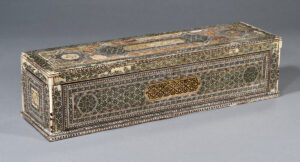
Wooden marquetry kit-box for a calligrapher, with ivory and gold-painted details
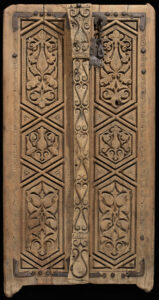
Wooden door (two leaves and centre-post) carved with hexagonal compartments and arabesques

Wooden panel with thuluth and naskhi inscriptions naming the donor and artist, including Qur’anic passages
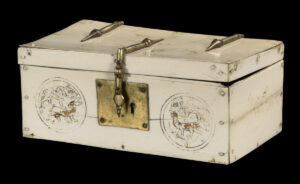
Ivory casket with gilded bronze fittings, decorated with birds, felines and hares; silk lining from Spain
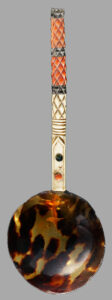
Set of ten luxurious spoons of coral, ivory, horn, tortoise shell, wood, etc., with silver and copper

Ivory box carved with unicorns, birds, plants and human faces; lid inscribed with pseudo-naskhi
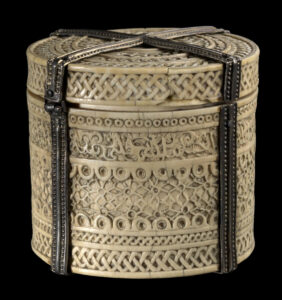
Ivory lidded box with guilloche borders, geometric pattern and naskhi inscription

Ivory bottle inscribed in Kufic script ‘O Fulfiller of needs, O Supporter of goals’

The al-Sabah Collection is rich in manuscripts of the Qur’an. These range from a double page folio from one of the earliest known manuscripts, copied in the second century of Islam in a distinctive vertical script known as Hijazi, to
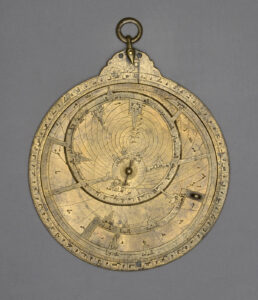
The al-Sabah Collection contains almost two thousand items of metalwork ranging from elaborately worked vessels inlaid with precious metals to simply cast bronze finials in the form of animals. Islamic metalworkers, whether in Cairo or Herat, often fashioned relatively simple
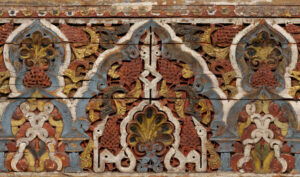
Objects of ivory and wood comprise decorative architectural items such as beams and doors, and smaller items such as boxes, jewellery and gaming pieces. Relatively few examples have survived due to the perishability of the materials.
That said, an ivory